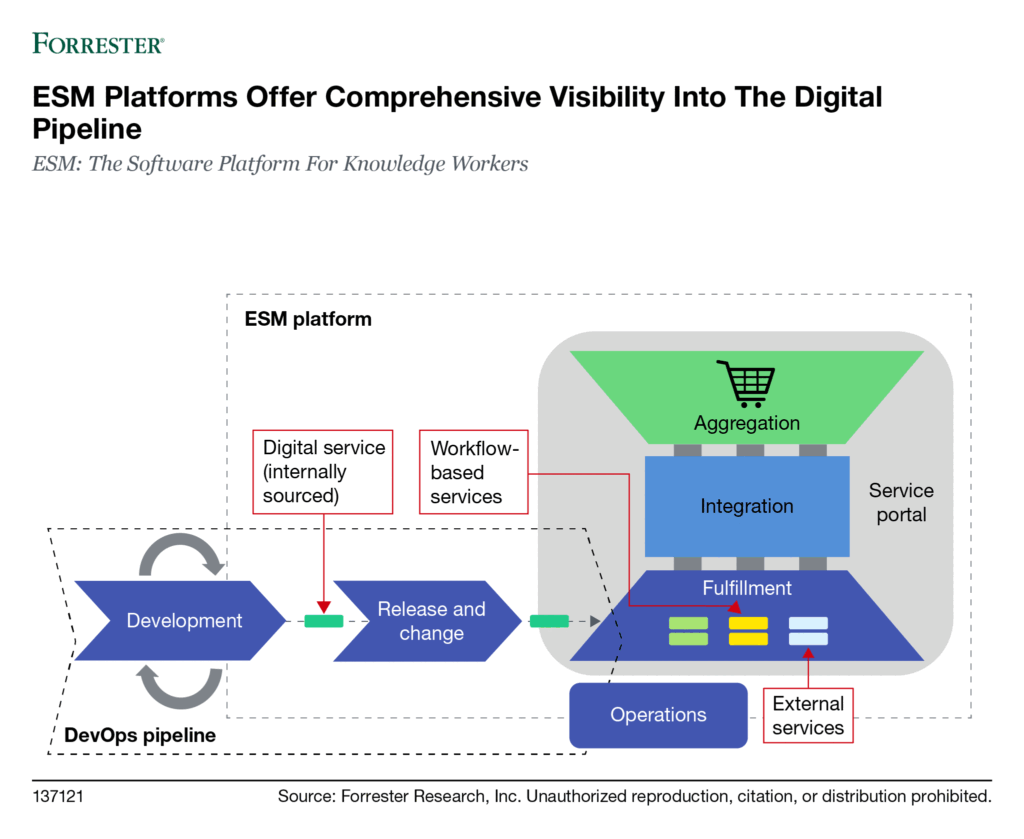Accelerate With Enterprise Service Management
Enterprise service management (ESM) emerged from the crowded IT service management (ITSM) market. ESM expands service thinking and the service catalog into domains outside of IT as well as speeding up workflow development. By doing this, it is maturing into a general solution for enabling knowledge-centric value. Forrester expanded its coverage from ITSM to ESM in 2017, and the market has confirmed this expansion. Our guidance at the time was “cautious optimism” — we’re now changing this to “full speed ahead.” And in the current environment, ESM provides critical access and coordination services for workforces that suddenly find themselves in a brave new remote world.
Currently, many enterprises struggle with shared email boxes and poor task management and follow-through. Groupware systems, widely used for a time, are in decline as a basis for workflow. Employee expectations continue to rise. The irony now is that “consumer-grade” means “superior to industrial-grade” in digital systems where, in manufacturing, it meant exactly the opposite. And the diversity of needed and available services continues to increase.
In many of my reports and talks, I point out that Peter Drucker called it in 1959. He stated then that the 20th century was the age of the manual worker, while the 21st century would be all about the knowledge worker. The ongoing economic transition is immense. We started with massively scaled, yet inflexible, industrial value chains. Today, we have continually reconfigured, knowledge-intensive digital value networks. And how do we orchestrate and recompose these value networks? ESM curates and provides a systematic platform for discovery and access.
So what is ESM and how does it build on ITSM? It starts with formalizing your organization’s catalog of requestable services and workflows (both IT and non-IT). One Fortune 500 food products company took 450 processes previously based on technologies such as shared email boxes and replatformed them on ServiceNow. It notes that this massive expansion of the common service desk has had positive network effects: “Our frontline workers’ focus became very broad, and they are now enormous assets to the enterprise.”
It also relies on agile workflow development by using low-code technologies, such as BMC’s Innovation Suite. ESM vendors have been honing their platform capabilities for a long time now, and leading vendors such as Cherwell are competitive with dedicated low-/no-code products.

Finally, ESM extends and broadens ITSM platform integrations and capabilities. Request, incident, problem, and change can be applied to some degree to any service, whether based on computing or not. The flexible configuration management databases (CMDBs) at the heart of ESM solutions serve an increasing variety of creative applications. For example, all Jungheinrich forklifts are managed in a USU configuration management database. ESM vendors such as Atlassian are increasing the integration between the DevOps pipeline and the ESM platform. They are more tightly integrating IT operations (e.g., via ChatOps and event management) and closing the loop from incident management to product backlogs.
And finally, most of the major ESM vendors are aggressively moving to AI and advanced analytics for a variety of purposes such as better forecasting, anomaly detection, change risk assessment, natural language understanding, and improved incident and broader work routing.
For further information, see my recent report “ESM: The Software Platform For Knowledge Workers.”
